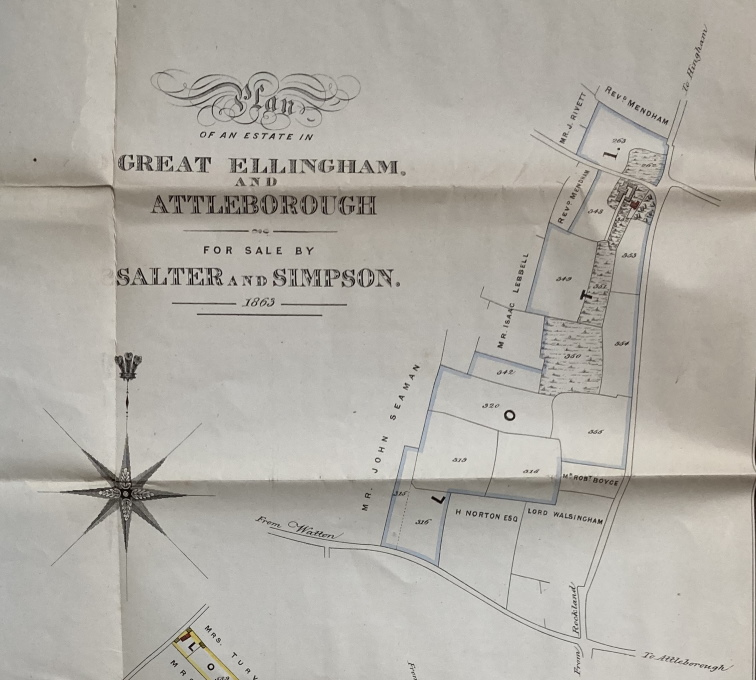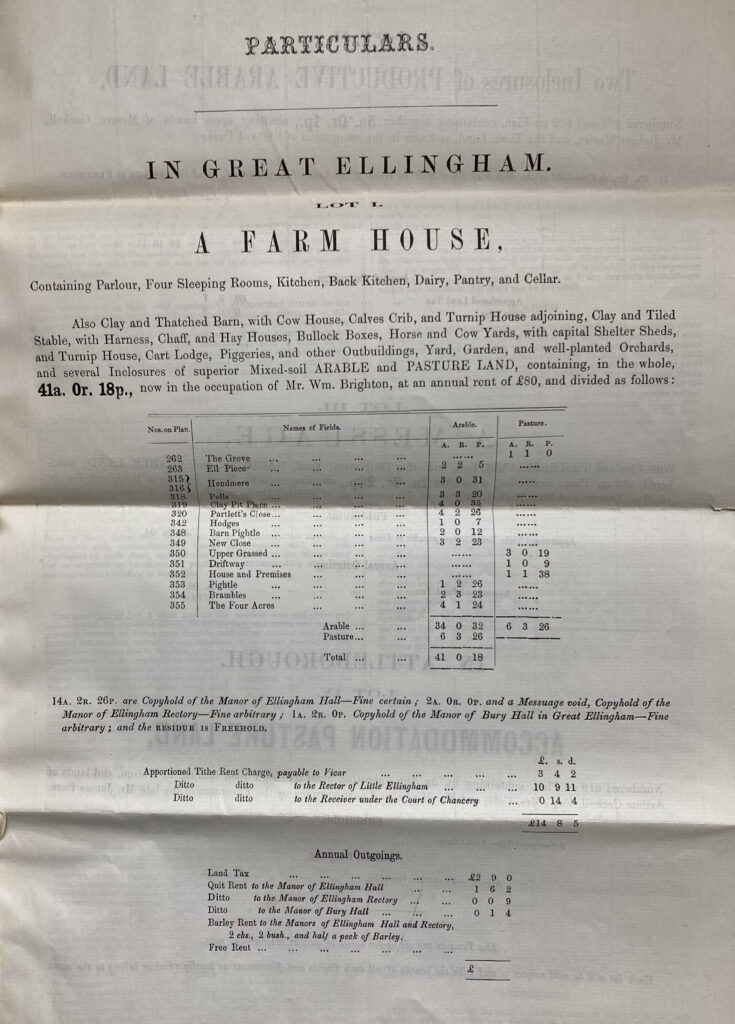Norfolk Heritage Explorer describes Rose Farmhouse in Great Ellingham as ‘a mid-17th century timber framed farmhouse with clay infill’.
The house will have seen the comings and goings of many families over the centuries and, if the walls of the building could talk, I wonder what secrets would be revealed!
At the time of the Great Ellingham Inclosures c.1800, Reuben and Jane Heasell owned and lived in the farmhouse, as well as farming some of the surrounding arable and pasture land. John Rose later purchased the farmhouse, and lived there until his death in 1847.
1863 Auction Particulars & Conditions of Sale
Historical Sales Particulars and Conditions of Sale can provide a detailed account of property and land being offered for sale.
A Particulars and Conditions of Sale prepared in June 1863 for the sale of a ‘Very Desirable Small Farm with Suitable Agricultural Buildings and Dwelling-House‘ in Great Ellingham is no exception. Further, a plan is attached to the Particulars and Conditions of Sale. Accordingly, we can see exactly where the ‘Very Desirable Small Farm’ lies in Great Ellingham. It is at the junction of the Hingham Road with Bow Street. The property was later known as Rose Farmhouse.

Extract of Map attached to Particulars & Conditions of Sale prepared by Auctioneers Salter & Simpson June 1863
From the extract from the map attached to the 1863 Particulars and Conditions of Sale, we can also see that at that time, the farmhouse was the only dwelling along the western side of Hingham Road to the junction with Bow Street.

Extract from Particulars & Conditions of Sale prepared by Auctioneers Salter & Simpson June 1863
The House
The above extract from the Particulars tell us that the farm house comprised ‘a Parlour, Four Sleeping Rooms, Kitchen, Back Kitchen, Dairy, Pantry and Cellar.
Farm Buildings
There was also a ‘Clay and Thatched Barn, with Cow House, Calves Crib, and Turnip House adjoining, Clay and Tiled Stable, with Harness, Chaff, and Hay Houses, Bullock Boxes, Horse and Cow Yards, with capital Shelter Sheds, and Turnip House, Cart Lodge, Piggeries, and other Outbuildings, Yard, Garden and well-planted Orchard.’
In addition, the farm comprised some 40 acres of arable and pasture land.
Sellers & Occupier
Although the sellers were the executors and mortgagees of the late James Rose, the farm was occupied by William Brighton at an annual rent of £80. However, I do not know whether William Brighton actually lived at the farm. It is possible that he sub-let the farm to under-tenants.
Source:
18th June 1863. Particulars & Conditions of Sale. Author’s own collection